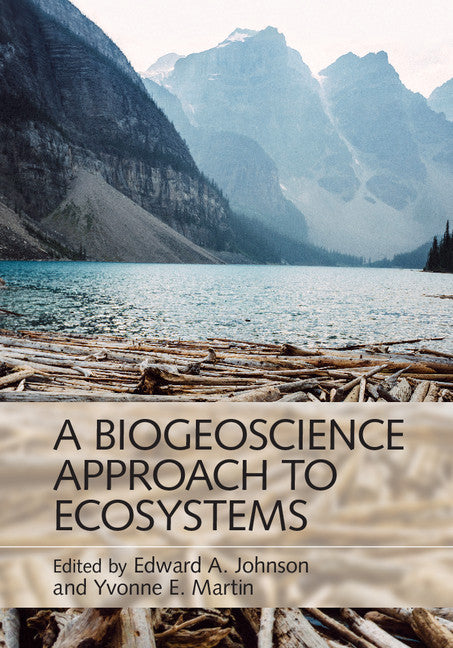Freshly Printed - allow 8 days lead
Couldn't load pickup availability
A Biogeoscience Approach to Ecosystems
Integrates geoscience and ecology, focusing on connections in ecological, geospheric, hydrospheric and atmospheric processes in ecosystems.
Edward A. Johnson (Edited by), Yvonne E. Martin (Edited by)
9781107046702, Cambridge University Press
Hardback, published 13 October 2016
492 pages, 121 b/w illus. 7 tables
25.3 x 18 x 2.5 cm, 1.2 kg
Biogeoscience is a rapidly growing interdisciplinary field that aims to bring together biological and geophysical processes. This book builds an enhanced understanding of ecosystems by focusing on the integrative connections between ecological processes and the geosphere, hydrosphere and atmosphere. Each chapter provides studies by researchers who have contributed to the biogeoscience synthesis, presenting the latest research on the relationships between ecological processes, such as conservation laws and heat and transport processes, and geophysical processes, such as hillslope, fluvial and aeolian geomorphology, and hydrology. Highlighting the value of biogeoscience as an approach to understand ecosystems, this is an ideal resource for researchers and students in both ecology and the physical sciences.
1. Introduction Edward A. Johnson and Yvonne E. Martin
Part I. Connecting Ecosystem and Geoscience Processes: 2. Toward a general scaling theory for linking traits, stoichiometry, and body size to ecosystem function Brian J. Enquist, Sean T. Michaletz and Andrew J. Kerkhoff
Part II. Transport Processes and Conservation Budgets in Biogeoscience: 3. Heat balances in ecological contexts Warren P. Porter
4. Water budgets in ecosystems John W. Pomeroy, Matthew K. MacDonald, Pablo F. Dornes and Robert Armstrong
Part III. Coupling Hillslope Geomorphology, Soils, Hydrology, and Ecosystems: 5. Landscape evolution models and ecohydrologic processes Erkan Istanbulluoglu
6. Soil mantled hillslopes: intersections of geomorphology, soil science, and ecology Kyungsoo Yoo and Nic Jelinski
7. Interactions between precipitation and vegetation canopies Alexandra G. Ponette-González, Holly A. Ewing and Kathleen C. Weathers
8. Constraints on nutrient dynamics in terrestrial vegetation David Robinson
9. Evapotranspiration T. Andrew Black and Rachhpal S. Jassal
Part IV. Coupling Fluvial and Aeolian Geomorphology, Hydrology/Hydraulics, and Ecosystems: 10. Mechanisms of flow and sediment transport in fluvial ecosystems: physical and ecological consequences Brett Eaton and Jordan Rosenfeld
11. Measuring the hydraulic landscapes of stream-dwelling invertebrates for ecological research Jill Lancaster
12. Salt marsh ecosystems: tidal flow, vegetation, and carbon dynamics Simon M. Mudd and Sergio Fagherazzi
13. Coastal dunes and vegetation dynamics Edward A. Johnson and Yvonne E. Martin
14. Biological control on geomorphology: a functional classification Dov Corenblit, Bruno Corbara and Johannes Steiger.
Subject Areas: Conservation of the environment [RNK], Applied ecology [RNC], Biogeography [RGM], Physical geography & topography [RGB], Geological surface processes [geomorphology RBGD], Earth sciences [RB], Plant ecology [PSTS], Ecological science, the Biosphere [PSAF], Biology, life sciences [PS], Geophysics [PHVG]


